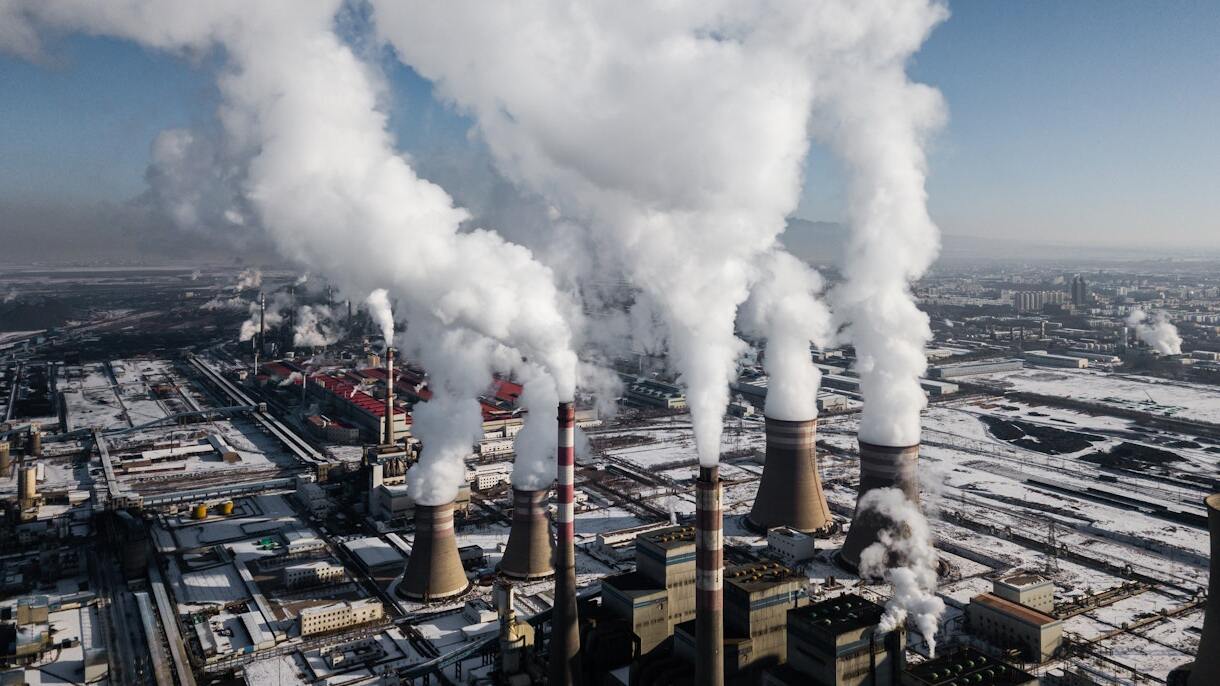
What are emissions? Emissions are substances released into the air, often as a result of human activities like driving cars, burning fossil fuels, or industrial processes. These substances can include gases like carbon dioxide, methane, and nitrous oxide, which contribute to air pollution and climate change. Why should we care about emissions? They affect the air we breathe, the health of our planet, and even our own health. Reducing emissions can lead to cleaner air, a more stable climate, and a healthier environment for everyone. How can we reduce emissions? Simple actions like using public transport, recycling, and conserving energy can make a big difference.
What Are Emissions?
Emissions refer to the release of substances, usually gases, into the atmosphere. These substances can come from various sources and have different impacts on the environment and human health. Here are some intriguing facts about emissions:
-
Greenhouse gases like carbon dioxide (CO₂), methane (CH₄), and nitrous oxide (N₂O) trap heat in the atmosphere, contributing to global warming.
-
Carbon dioxide is the most significant greenhouse gas emitted by human activities, primarily from burning fossil fuels like coal, oil, and natural gas.
-
Methane is over 25 times more effective than CO₂ at trapping heat in the atmosphere over a 100-year period.
-
Nitrous oxide emissions come from agricultural activities, fossil fuel combustion, and industrial processes. It is about 300 times more potent than CO₂ in terms of its global warming potential.
Sources of Emissions
Emissions can originate from both natural and human-made sources. Understanding these sources helps in managing and reducing their impact.
-
Volcanoes release large amounts of CO₂, sulfur dioxide (SO₂), and other gases during eruptions.
-
Wildfires emit CO₂, methane, and particulate matter, contributing to air pollution and climate change.
-
Transportation is a major source of CO₂ emissions, with cars, trucks, ships, and airplanes burning fossil fuels.
-
Electricity generation from coal, oil, and natural gas power plants is one of the largest sources of CO₂ emissions worldwide.
-
Agriculture contributes to emissions through livestock digestion (producing methane) and the use of synthetic fertilizers (producing nitrous oxide).
Impact of Emissions on Health
Emissions don't just affect the environment; they also have significant health implications.
-
Air pollution from emissions can cause respiratory diseases like asthma, bronchitis, and even lung cancer.
-
Particulate matter (PM2.5 and PM10) from emissions can penetrate deep into the lungs and bloodstream, leading to cardiovascular diseases.
-
Ground-level ozone, formed by the reaction of sunlight with pollutants like nitrogen oxides (NOx) and volatile organic compounds (VOCs), can cause respiratory problems and other health issues.
-
Sulfur dioxide (SO₂) emissions can lead to acid rain, which harms ecosystems and can cause respiratory problems in humans.
Emission Reduction Strategies
Efforts to reduce emissions are crucial for mitigating climate change and improving air quality.
-
Renewable energy sources like wind, solar, and hydroelectric power produce little to no emissions compared to fossil fuels.
-
Energy efficiency improvements in buildings, vehicles, and industries can significantly reduce emissions.
-
Public transportation and carpooling reduce the number of vehicles on the road, cutting down on emissions.
-
Electric vehicles (EVs) produce zero tailpipe emissions and are becoming more popular as a cleaner alternative to gasoline-powered cars.
-
Carbon capture and storage (CCS) technology can capture up to 90% of CO₂ emissions from power plants and industrial sources, preventing it from entering the atmosphere.
Global Efforts to Combat Emissions
Countries around the world are taking steps to address emissions and their impacts.
-
The Paris Agreement is a global pact where countries commit to reducing their greenhouse gas emissions to limit global warming to well below 2°C above pre-industrial levels.
-
The Kyoto Protocol was an earlier international treaty that set binding emission reduction targets for developed countries.
-
Emission trading systems (ETS), like the European Union Emissions Trading System, allow countries or companies to buy and sell emission allowances to meet their reduction targets.
-
National policies like carbon taxes and renewable energy incentives encourage businesses and individuals to reduce their emissions.
Technological Innovations in Emission Reduction
Innovations in technology play a crucial role in reducing emissions and mitigating their effects.
-
Smart grids use digital technology to manage electricity demand more efficiently, reducing the need for fossil fuel-based power generation.
-
Advanced nuclear reactors offer a low-emission alternative to traditional fossil fuel power plants.
-
Bioenergy from organic materials like plant and animal waste can be a renewable and low-emission energy source.
-
Hydrogen fuel cells produce electricity through a chemical reaction between hydrogen and oxygen, emitting only water vapor as a byproduct.
-
Artificial intelligence (AI) and machine learning can optimize energy use in industries and homes, reducing emissions by improving efficiency.
The Final Word on Emissions
Understanding emissions is crucial for tackling climate change. From greenhouse gases to carbon footprints, emissions impact our planet in many ways. Reducing them involves renewable energy, efficient transportation, and sustainable practices. Governments, businesses, and individuals all play a role. Simple actions like recycling, using public transport, and conserving energy make a difference.
Innovations in technology, such as electric vehicles and solar power, offer hope. Policies like carbon taxes and emission trading systems push for change. Awareness and education are key. Knowing the facts empowers us to act.
Every effort counts. Small steps lead to big changes. By working together, we can reduce emissions and protect our planet for future generations. Let's commit to a cleaner, greener world.
Was this page helpful?
Our commitment to delivering trustworthy and engaging content is at the heart of what we do. Each fact on our site is contributed by real users like you, bringing a wealth of diverse insights and information. To ensure the highest standards of accuracy and reliability, our dedicated editors meticulously review each submission. This process guarantees that the facts we share are not only fascinating but also credible. Trust in our commitment to quality and authenticity as you explore and learn with us.
